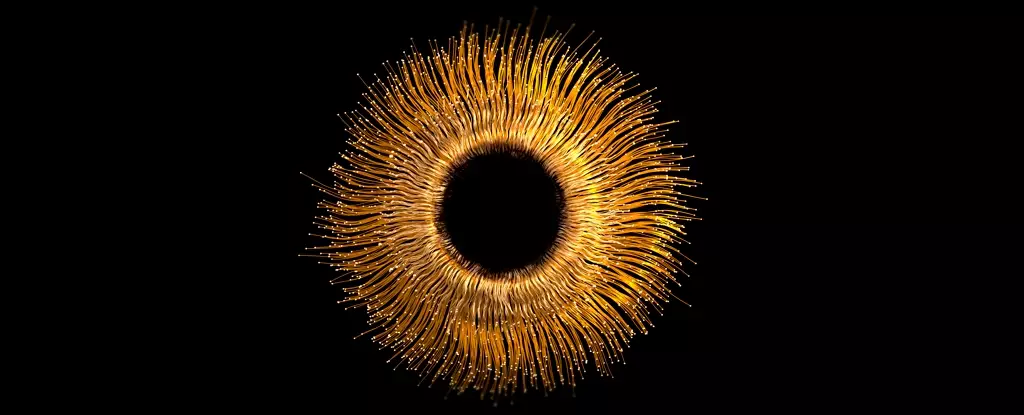In a world constantly seeking innovative solutions to age-old problems, the latest findings from a mouse study in the United States present a groundbreaking yet unconventional treatment for age-related macular degeneration (AMD) and other degenerative eye conditions. To many, the idea of gold dust as a viable therapy may sound peculiar; but for millions grappling with the gradual loss of sight, this research offers a flicker of hope. AMD, a leading cause of vision loss, is not merely a medical concern but a significant emotional burden that affects one’s quality of life, underscoring the urgent need for advancements in treatment.
The retina’s macula, crucial for sharp, central vision, often falls victim to degenerative ailments as we age. Current interventions can only hope to hamper the progression of AMD, leaving countless individuals facing bleak prospects. Enter biomedical engineer Jiarui Nie from Brown University, whose team has pioneered a less invasive treatment that could revolutionize how we understand and manage retinal degeneration. By employing gold nanoparticles that are astonishingly thin—thousands of times narrower than a human hair—this novel method sidesteps the need for surgery and genetic modifications while presenting a potentially transformative therapeutic option.
The Mechanics Behind the Magic
At the heart of this innovative treatment lies a simple yet effective mechanism: gold nanoparticles infused with antibodies to selectively target specific ocular cells. These nanoparticles are introduced into the gel-filled vitreous chamber of the eye, where they await activation by a small infrared laser device. This innovative process mimics the functionality of photoreceptors, effectively bypassing the damaged cells that contribute to vision loss. Imagine a pair of glasses that not only corrects but also enhances your vision through sophisticated nanotechnology—a vision that may soon transition from speculation to reality.
The initial results observed in mice engineered with retinal disorders demonstrate promise. Although testing an animal’s vision can be inherently challenging, the outcomes indicated that these nanoparticles could restore vision to a degree by stimulating the visual pathway directly. Significantly, Nie’s team noted that the gold particles remain in the retina for extended periods without exhibiting any major toxicity, which is a crucial aspect when considering treatments for humans.
Challenges and Opportunities in Translation to Human Treatment
While the concept is compelling, one cannot help but ponder the hurdles that lie ahead. The transition from animal models to human applications is often fraught with complications, including safety concerns, regulatory barriers, and the efficacy of treatments in the human eye. Despite the encouraging data obtained from this study, it could be years before this technique is deemed safe and effective for widespread human use.
Moreover, as with many pioneering medical advancements, there is a propensity to overstate the immediacy of success. A method that works wonders in a controlled laboratory environment may encounter unforeseen challenges when faced with the complexities of human anatomy and varied ocular health. After all, our bodies are not mere versions of laboratory mice; they are intricate systems that respond to treatments in unpredictable ways.
The Future of Vision Restoration
As we witness an increasing number of studies exploring innovative technologies and scientific advances aimed at combating eye diseases, one can’t help but feel buoyed by the promising potential of concepts like gold nanoparticles. Research in the field of retinal health continues to proliferate, with scientists exploring various mechanisms that leverage cellular reprogramming to restore photoreceptor function.
The allure of using gold nanoparticles is not simply in their aesthetic or metaphorical glimmer—they embody the spirit of innovation that we urgently need in healthcare today. The transformative potential of this approach is not just about eyesight; it symbolizes a shift toward patient-centric treatment modalities that prioritize less invasive interventions over traditional, more cumbersome methods.
While there is still a long way to go before this eye treatment becomes a conventional reality, the notion that we may one day restore vision to those afflicted by AMD through such innovative techniques ignites hope. As we move forward, the focus must remain not only on the scientific intricacies but also on the human experiences intertwined with vision loss—making the promise of restored sight not just a triumph of science, but a victory of compassion and care.



Leave a Reply